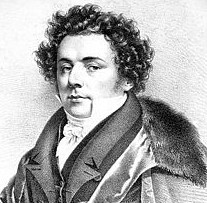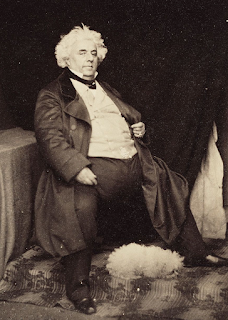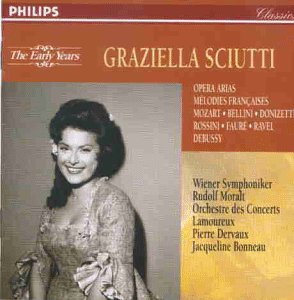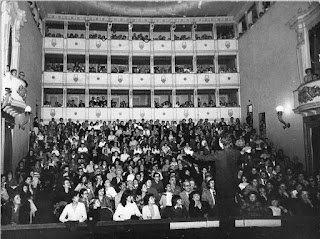Audience favourite with a jealous streak
 |
| Giovanni Paisiello was one of the most popular Italian composers in the 18th century |
Paisiello was talented, versatile and had a big influence on other composers of his day and later, yet he was jealous of the success of rivals and is remembered today primarily as the composer whose passionate fans wrecked the premiere of Gioachino Rossini’s opera Almaviva, which was based on the same French play as Paisiello’s Il barbiere di siviglia, which was regarded as his masterpiece.
Rossini’s opera would eventually be more commonly known as Il barbiere di siviglia, but not until after Paisiello had died.
Nonetheless, Paisiello’s supporters still felt Rossini was attempting to steal their favourite’s thunder and many of them infiltrated the audience at Almaviva’s opening night in Rome and disrupted the performance with constant jeers and catcalls.
History has shown that perhaps they were right to be worried: today, Rossini’s Barber of Seville is one of the world’s most popular operas, yet Paisiello’s is rarely performed.
Paisiello was educated at a Jesuit school in Taranto. His father wanted his son to become a lawyer but noted the beauty of his singing voice and enrolled him at the Conservatory of San Onofrio at Naples.
 |
| A poster advertising the premiere of Paisiello's opera Nina |
He set himself up in rivalry with the established giants of the Neapolitan school, Niccolò Piccinni, Domenico Cimarosa and Pietro Guglielmi. He was known for being bitterly outspoken when one or another of the trio staged a work that received public acclaim, but he enjoyed his own triumphs, in particular with his 1767 comic opera L'ldolo cinese.
Paisiello left Naples only when he was invited in 1776 by the Russian empress Catherine II to St. Petersburg, where he remained for eight years. It was there that he produced Il barbiere di siviglia, with a libretto by Giuseppe Petrosellini, based on the play by Pierre Beaumarchais.
Il barbiere premiered in St Petersburg in 1782 and its fame spread quickly around Europe. Among those influenced by the artistry of his score and the beauty of the melodies was Mozart, whose Marriage of Figaro made its debut four years later as a sequel to Paisiello’s Barbiere.
Paisiello left Russia in 1784, initially going to Vienna before returning to Naples to enter the service of King Ferdinand IV, where he enjoyed more success, composing what many regard as his best operas, including Nina and La Molinara, the latter featuring perhaps the best-known tune that Paisiello wrote in his lifetime, the duet Nel cor più non mi sento, which inspired works by Beethoven, Paganini and many others.
 |
| Domenico Cimarosa was a target for Paisiello's outspoken comments |
However, the Parisian public was unimpressed and in 1803 he obtained permission to return to Italy, citing his wife's ill health. He kept his job in Naples even after the fall of Ferdinand IV, who was replaced as king by Napoleon’s brother, Joseph, and in turn by Joachim Murat.
But by then he was beginning to lose his touch and his fortunes declined just as the power of the Bonapartes was collapsing. His wife died in 1815 and his own health failed quickly thereafter. He died in 1816 at the age of 76.
In addition to his operas, Paisiello wrote a good deal of church music and instrumental works that include symphonies, harp and piano concerti, string quartets, sonatas for harp, violin and cello.
The 20th century saw his Barbiere and La Molinara revived along with a number of other operas and instrumental pieces.
| The Castello Aragonese is a landmark in Taranto |
Taranto, situated at the top of the inside of the ‘heel’ of Italy, where Paisiello was born, is a large city - population in excess of 200,000 - of two distinct sections, divided by a swing bridge. The bridge links the small island containing the Città Vecchia, the old city, guarded by the imposing 15th century Castello Aragonese castle, which protects an area of Greek origins which has not been overdeveloped and has an authentic atmosphere of old southern Italy. On the southern side of the bridge is the modern, new city, full of wide boulevards and carrying a much more prosperous air. The city is heavily industrialised with a huge steel industry and a large naval base but its National Museum contains one of the most important collections of Greek and Roman artefacts in Italy.
 |
| The Conservatorio of San Onofrio |
The Conservatorio of San Onofrio a Porta Capuana was one of the four original Naples conservatories, founded in 1588 and developed first as an orphanage. Almost one fifth of the students at the Conservatory of San Onofrio were castrati, which gave it a different identity. Its popularity declined during the Napoleonic period, and only 30 students remained when the conservatory merged with that of Santa Maria di Loreto in 1797.
Home









